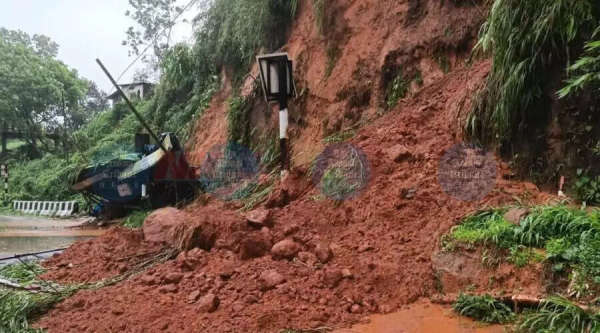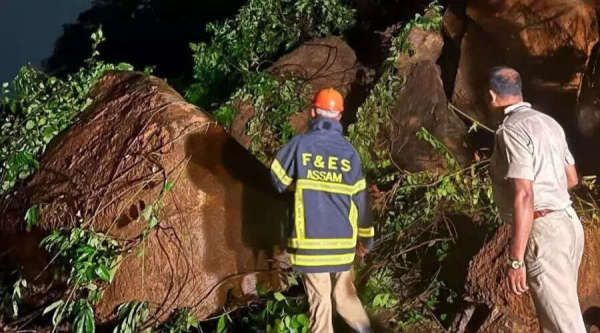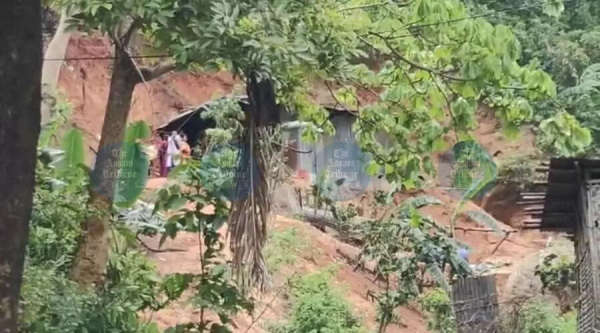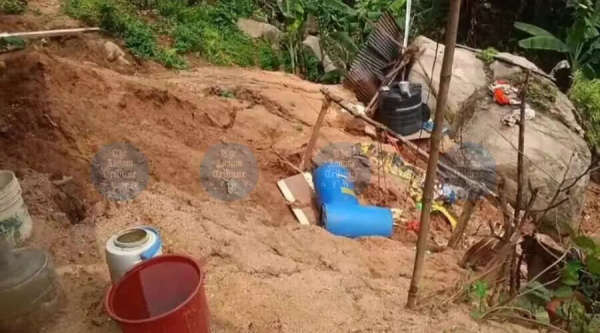 Heavy Rainfall Forecast and Landslide Concerns
Heavy Rainfall Forecast and Landslide Concerns
The India Meteorological Department (IMD) has predicted continued rainfall in Guwahati until June 8, as the city struggles to recover from the severe downpour on May 30 that disrupted daily life.
Civic issues such as flooded roads, traffic congestion, and safety worries are prevalent, while the hilly outskirts of the city face a persistent threat—landslides. A recent landslide in Bonda resulted in three fatalities, including a child.
Recent data indicates that 366 areas in Guwahati have been classified as prone to landslides.
Sunsali Hill is the most vulnerable, with 77 identified spots, followed by Noonmati (40), Kharguli (37), Khanapara (33), Narangi (31), and Hengrabari (30). Other notable high-risk locations include Kahilipara (25), Santipur (20), and Narakasur Hill (14).
Additionally, there are 9 landslide-prone sites in Garbhanga, 8 in Maligaon, 7 in Kalapahar, and 6 each in Gotanagar and Nabagraha.
Fatasil, Kamakhya/Nilachal, Sarania, and Koina-Dhora each have 5 such locations, while Jalukbari/Lankeshwar has 2, and Sukreswar has 1.
The unchecked urban expansion into Guwahati’s delicate hill ecosystems has exacerbated the situation. Once lush and sparsely populated, these slopes are now filled with unauthorized constructions, increasing their susceptibility to landslides during the rainy season.
Dipanjol Deka, an environmentalist, remarked, “Previously, the hills of Guwahati were dark at night. Now, lights are visible everywhere, highlighting the extent of human encroachment. The recurring landslides are a direct consequence of deforestation, and unregulated development plays a significant role.”
Living in Constant Fear

A recent landslide incident in Kamakhya Hills. (Photo: 'X')
‘We live in fear every monsoon’
Just a week prior to the landslide tragedy in Bonda, the Assam State Disaster Management Authority (ASDMA) had issued a warning advising residents in landslide-prone areas to move to safer locations before the monsoon season. Unfortunately, many ignored this advice, leading to tragic outcomes.
Why do residents continue to inhabit these hazardous hillsides despite the evident dangers? Robin Das from Sunsali shared, “Our parents built this home, and we’ve lived here for so many years. Leaving everything behind to start anew is not feasible for us.”
Many locals believe that heavy rainfall, coupled with rampant construction, has destabilized the soil, resulting in frequent landslides.
Queen Pathak, a Kharguli resident, expressed, “We’ve lived here for over ten years, but the situation has worsened. Although nothing has happened in our area yet, every heavy rain makes us fear that the hill behind our house might collapse.”
Alok Sarma from Noonmati echoed her sentiments, stating, “Every monsoon feels like a survival test. We can’t sleep soundly during rainy nights—we’re always listening for the sounds of cracking earth or shifting soil. It’s frightening.”
For many, especially those from lower-income families, relocating is not a viable option. As Pathak and Sarma noted, they feel trapped—unable to move due to financial limitations, yet forced to live under the constant threat of danger.
Strategies for Prevention

Landslide in Bonda, Guwahati
The path towards prevention
To effectively prevent landslides in Guwahati, immediate and coordinated actions are necessary—this includes regulating unplanned construction, restoring green spaces, and enhancing drainage systems.
Experts assert that many landslides in the city are not natural disasters but rather man-made crises. Uncontrolled deforestation, reckless hill cutting, and construction without adequate retaining walls or drainage systems have all contributed to the destabilization of these fragile slopes.
Deka emphasized, “If someone builds a house in the hills, they must construct a guard wall to protect against landslides. However, due to the high cost of guard walls, many people encroach on these areas and build makeshift structures, which later put them at significant risk.”
The loss of vegetation not only compromises slope stability but also diminishes the land's ability to absorb rainwater, turning even light rainfall into a serious threat.
Pathak mentioned, “Nothing major has happened in our locality so far, but recently the District Commissioner visited and laid a tarpaulin along the roadside to redirect rainwater.”
To address the escalating threat, experts advocate for a multi-faceted approach, including strict enforcement of construction regulations and targeted awareness initiatives.
Deka stressed, “All encroachments in the hills must be halted. Construction in these areas directly jeopardizes lives. The government must take decisive action to prevent unauthorized settlements. If construction is permitted, it should be strictly conditional—such as requiring the building of protective guard walls. Clear Standard Operating Procedures (SOPs) must be established and adhered to.”
The hills of Guwahati are sending a warning. The stakes are high, encompassing not just the city’s ecological balance but also the safety and future of its inhabitants.
Sustainable development, grounded in environmental stewardship, is the only viable path forward to protect these delicate landscapes and the lives that depend on them.
Aftermath of Landslide

The aftermath of landslide in Bonda









